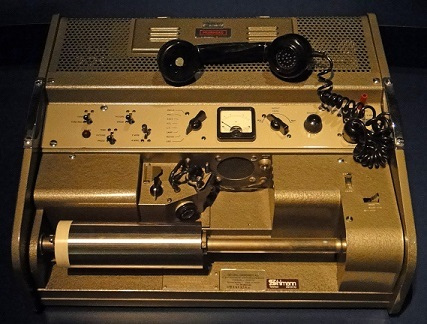History of Fax Machines
Bain was a Scottish philosopher, educator, and key proponent of the English School of Empiricism. Renowned for his contributions to logic, philosophy, and education, he was also an innovator. Interestingly, Scottish inventor Alexander Bain, often credited with creating the first fax machine, revolutionized communication technology. While the initial fax machine, devised by Bain, suffered from poor image quality and limited functionality, it was an impressive achievement given the technical constraints of the time. This invention marked the beginning of a global transformation in how business communication was conducted.
Bain’s fax machine was inspired by Samuel Morse’s telegraph, invented in 1835. He cleverly merged clockwork mechanics with telegraph technology, using pendulums and synchronized systems to transmit images line by line. Over the years, fax technology underwent significant advancements, eventually evolving into the modern, sophisticated systems like mobile fax that we use today.

Xerox and the Long Distance Xerograph
In 1964, Xerox introduced the Long Distance Xerograph (LDX), a groundbreaking fax machine capable of transmitting standard-sized documents to other fax machines in just six minutes. This innovation placed Xerox at the forefront of fax technology development, paving the way for more efficient communication solutions.
ad
Analog fax machines
The advent of analog fax machines marked a significant leap forward in faxing technology. At the time, faxing was considered one of the most secure methods for transmitting confidential information. Analog fax machines gained widespread adoption, particularly among businesses, as the technology continued to advance and improve.
Multifunctional devices
Integrating fax capabilities into multifunction devices and copiers brought a new level of practicality to office environments. These devices combined scanning, copying, and faxing functions, allowing businesses to save time and streamline operations. However, multifunctional devices were more expensive than traditional fax machines.
While initial setup costs were higher, they offered long-term benefits, such as reduced paper expenses—a boon for companies that still rely on faxing today. Essentially, these devices functioned as computers, connecting to telephone lines for fax transmission and often integrating with home or corporate networks for seamless printing and scanning.
The era of online faxing
With the rise of digital technology in the mid-1990s, faxing underwent a dramatic transformation. Digital faxing, or online faxing, employed cloud technology to send and receive faxes via smart devices. Also referred to as internet fax or e-fax, this method became popular for its cost-effectiveness, speed, and ease of use. Online faxing is not only practical but also highly secure; documents are safeguarded through end-to-end encryption. Today, many businesses rely on online faxing. All that’s required is an internet-connected device and an online fax account, enabling users to send faxes from anywhere in seconds.
This progression—from Bain’s early device to today’s advanced digital solutions—illustrates how fax technology has continually evolved to meet the needs of modern communication.
Timeline
- 1843: Alexander Bain invents the ‘Electric Telegraph Press,’ the first fax machine.
- 1850: F.C. Blakewell patents a device known as the “copying telegraph.”
- 1860: Giovanni Caselli’s Pantelegraph sends the first fax between Paris and Lyon.
- 1880: Shelford Bidwell creates the first telefax machine capable of scanning and transmitting two-dimensional images, called the scanning phototelegraph.
- 1888: Elisha Gray develops the TelAutograph machine, enabling the transmission of handwritten signatures over long distances.
- 1924: The Telephotography Machine, developed by AT&T, is utilized by newspapers to transmit photos, including coverage of political conventions.
- 1926: The invention of Radiophoto allows faxing via radio waves.
- 1947: Alexander Muirhead invents a commercially successful fax machine.
- 1964: Xerox Corporation introduces the first commercialized fax machine using telephone transmission.
- 1982: GammaLink launches the GammaFax, the first computer-based fax board.
- 1996: The first internet fax service becomes publicly available, enabling faxing via computers.
- 2010: Internet faxing is integrated into Apple devices, allowing users to send faxes digitally.
How does the fax machine work?
Fax machines remain a valuable tool for document transmission in workplaces. Both the sender and recipient need a fax machine. To send a fax, the sender scans the document, ensuring the pages are in the correct order. The document is then transmitted through the telephone network to the recipient’s machine, where it is printed. To initiate the process, the sender must dial the recipient’s fax number, which functions like a phone line.
Often viewed as essential office equipment, fax machines support both internal and external communication, including international transmissions. When a recipient is about to receive a fax, their machine signals with a distinct beep. Beyond the technical process, proper communication etiquette is vital. For example, when corresponding with an official institution, a petition format may be appropriate. For business communications, an email-like format is commonly used. Including details such as the recipient’s title, name, and surname ensures the message reaches the intended person. Adding “Attention” can further direct the fax to the right individual.
The importance of fax today
Despite the rise of digital communication, faxing remains relevant, particularly in corporate correspondence, the exchange of official documents, and inter-institutional communication. Several reasons contribute to its continued importance:
- Global acceptance: Faxing is recognized worldwide as a reliable communication method.
- Delivery confirmation: Sending reports confirm whether the fax successfully reached its destination.
- Legal validity: In many institutions, fax is considered a legally acceptable method of document transmission.
- Security: Secure fax lines and 256-bit SSL encryption protect against cyber threats.
- Ease of use: Fax machines are straightforward and can be easily integrated with internal software, such as CRM systems.
ad


Comments are closed.